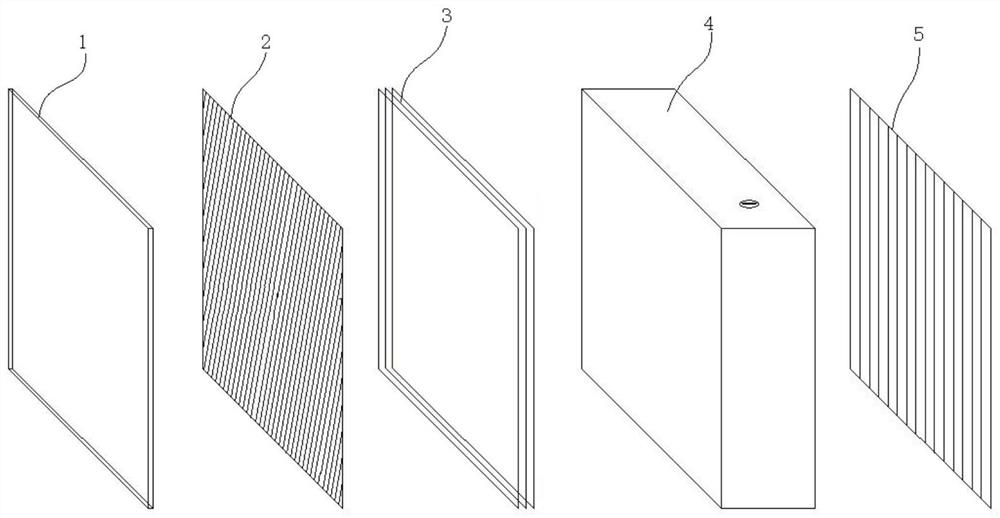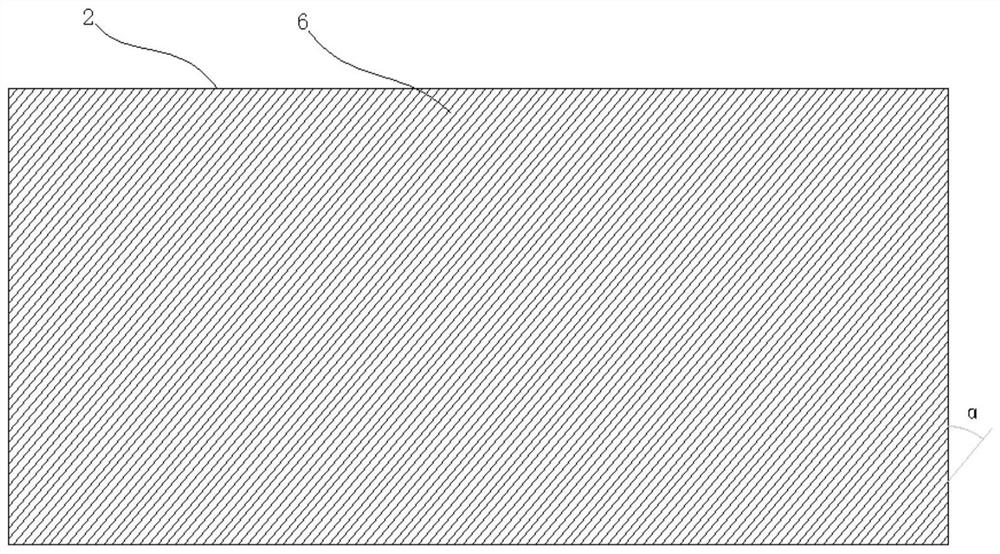A TV display with depth of field
A display and TV technology, which is applied in the field of depth-of-field TV displays, can solve the problems of image stereoscopic effect, image clarity, and poor 3D effect, etc., and achieve the effects of enhancing image stereoscopic effect, improving anti-glare effect, and improving image depth
- Summary
- Abstract
- Description
- Claims
- Application Information
AI Technical Summary
Problems solved by technology
Method used
Image
Examples
Embodiment 1
[0031] A depth-of-field television display is characterized in that it comprises a liquid crystal screen, a grating, a polarizing glass, a depth-of-field device and a polarizing film, and the liquid crystal screen, the grating, the polarizing glass, the depth-of-field device and the polarizing film are compounded in sequence.
[0032] In this embodiment, the image light emitted by the liquid crystal screen first passes through the grating refraction structure to form a three-dimensional image effect, and then passes through the polarizing glass to eliminate interference light and glare. The depth of the displayed virtual image formed by the image light is deepened, the depth of the image is enhanced, and the three-dimensional effect is enhanced. Finally, the image is displayed after being polarized by the polarizing film.
Embodiment 2
[0034] Embodiment 1 The front of the grating is provided with a plurality of obliquely arranged notches, and the notches are arranged in parallel, and there is one grating unit between two adjacent notches, and the notch and the vertical The angle in the vertical direction is the slope angle of the grating, and the slope angle of the grating is α, and the α is 15-65°;
[0035] Wherein, the grating unit is composed of a transmission arc surface in the middle and reflection surfaces on both sides of the transmission arc surface, and the notch is V-shaped to form reflection surfaces on both sides of the transmission arc surface, and the transmission arc surface is arc-shaped , the included angle between the reflective surface and the V-shaped symmetry line formed by the notch is β, and the β is 5-10.
[0036] In this embodiment, the notches are arranged obliquely to form obliquely parallel grating units, thereby adjusting the columnar arrangement refraction structure of the image...
Embodiment 3
[0040] The polarizing glass described in Embodiment 1 is formed by laminating the substrate, the second polarizing film and the reflective see-through film through pressure-sensitive adhesive;
[0041] Wherein, the substrate is one of optical glass, optically strengthened glass or TFT glass, and before bonding and compounding the polarizing film, the two sides of the polarizing film need to be subjected to AG treatment and AR treatment respectively, and the surface subjected to AR treatment It is the surface where the polarizing film is bonded to the substrate, and the AG-treated surface is the surface where the polarizing film and the reflective see-through film are bonded. The transmission direction and reflection direction of the reflective see-through film are unified, and are all opposite to the direction of the substrate.
[0042] The polarizing glass of this embodiment is designed according to the optical principle of the polarizing film. When the image light is perpendi...
PUM
 Login to View More
Login to View More Abstract
Description
Claims
Application Information
 Login to View More
Login to View More - R&D
- Intellectual Property
- Life Sciences
- Materials
- Tech Scout
- Unparalleled Data Quality
- Higher Quality Content
- 60% Fewer Hallucinations
Browse by: Latest US Patents, China's latest patents, Technical Efficacy Thesaurus, Application Domain, Technology Topic, Popular Technical Reports.
© 2025 PatSnap. All rights reserved.Legal|Privacy policy|Modern Slavery Act Transparency Statement|Sitemap|About US| Contact US: help@patsnap.com



